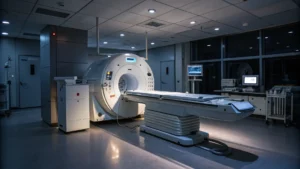Radiation therapy has significantly advanced over the past decades, making cancer treatment more precise and effective. This article explores how various radiation therapy technologies differ in terms of their mechanics, beam properties, and delivery methods, and highlights the importance of Cancare networking in providing access to advanced treatment options.
Radiation Therapy Technologies
1. Cobalt-Based Systems
Cobalt-60 units were some of the earliest tools used in external beam radiation therapy. They use gamma rays from cobalt-60 decay, typically delivering photon beams with around 1.25 MeV energy. Though cost-effective, their precision is not as advanced as modern technologies, making them less suitable for complex treatments.
2. Linear Accelerators (LINACs)
LINACs generate high-energy X-rays or electrons for external beam radiation therapy, offering energies from 4 MV to 25 MV for deeper and more precise treatment. They come with various beam modulation techniques to target tumors while sparing healthy tissues.
3. MLC-Based Modulated Beams
Multileaf collimators (MLCs) are essential in intensity-modulated radiation therapy (IMRT). They adjust beam shapes and intensities dynamically, providing precise dose delivery around tumors and reducing exposure to surrounding healthy tissues.
4. C-Type Linear Accelerators
C-arm LINACs provide rotational flexibility for effective targeting of tumors from different angles. They are commonly used in image-guided radiation therapy (IGRT) and stereotactic body radiation therapy (SBRT) to enhance precision.
5. Helical Delivery LINACs & Tomotherapy
Helical delivery LINACs, like Tomotherapy, combine CT imaging with IMRT, allowing a continuous 360-degree rotational treatment. This is particularly useful for complex tumor shapes near critical structures.
6. CyberKnife
CyberKnife is a robotic radiosurgery system delivering highly precise, frameless stereotactic radiation. It uses a LINAC on a robotic arm with real-time image guidance, ideal for treating small, moving tumors like those in the lung and prostate.
7. MRI-LINACs
MRI-LINAC systems combine real-time MRI imaging with radiation therapy for superior soft-tissue visualization and adaptive treatment planning, making them highly effective for tumors in areas prone to movement.
8. Proton Therapy
Proton therapy uses protons instead of X-rays. Due to the Bragg peak effect, protons deposit their maximum energy at a specific depth, reducing dose exposure to healthy tissues, making it suitable for pediatric cancers and tumors near critical organs.
9. Heavy Ion Therapy
Heavy ion therapy, like carbon-ion therapy, delivers even greater precision and biological effectiveness than proton therapy. It causes significant DNA damage to cancer cells, especially effective for radioresistant tumors.
Properties of Radiation Beams and Their Interaction with Matter
Energy and Penetration
- Cobalt-60 Gamma Rays: Medium-energy photons (~1.25 MeV), suitable for deep tumors but less precise.
- LINAC X-Rays: High-energy photons (4-25 MV) for better tissue penetration and dose conformity.
- Protons & Heavy Ions: Charged particles with energy-dependent penetration for precise dose targeting.
Interaction Mechanisms
- Photon Beams: Interact mainly through Compton scattering and pair production, leading to broad dose distribution.
- Protons: Lose energy via Coulombic interactions, exhibiting the Bragg peak for dose confinement to the tumor region.
- Heavy Ions: Higher LET results in more direct DNA damage, reducing tumor cell repairability and enhancing effectiveness.
Beam Delivery Differences
- Fixed vs. Rotational: LINACs offer rotational delivery for improved dose conformity, while proton and heavy ion therapies use fixed beamlines with scanning delivery techniques.
- Modulated vs. Uniform: Techniques like IMRT and CyberKnife use modulated beams for better targeting, while cobalt systems provide uniform dose distributions.
- Adaptive vs. Conventional: MRI-LINACs enable adaptive treatments based on real-time imaging, unlike conventional fixed plans.
The Role of Cancare Networking
Cancare Networking: Bridging the Technological Gap in Radiation Therapy
Cancare networking plays a crucial role in bridging the technological gap between regions. By seamlessly connecting hospitals, research centers, and clinicians, Cancare ensures that cutting-edge radiation therapy resources are more accessible. Through this network, institutions can benefit in several key ways:
- Access to Advanced Technologies: By linking institutions with modern radiation therapy resources and expertise, Cancare enables healthcare providers to adopt the latest treatment methods more efficiently.
- Training & Knowledge Sharing: Furthermore, Cancare offers educational platforms that empower clinicians to stay updated on the latest advancements, enhancing their skills and improving patient care.
- Collaborative Research: In addition, Cancare facilitates multi-center clinical trials, fostering collaboration among experts to validate new treatment approaches and improve clinical outcomes.
- Telemedicine Support: Moreover, by assisting in remote treatment planning and patient consultations, Cancare enhances healthcare delivery, ensuring that patients receive expert care regardless of their location.
By integrating these initiatives, Cancare strengthens the global fight against cancer, making advanced radiation therapy more accessible, efficient, and effective.
Conclusion
Radiation therapy technologies continue to evolve, with innovations like MRI-LINACs, proton therapy, and heavy ion therapy redefining treatment precision. Understanding the differences in these technologies, their interactions with matter, and their clinical applications is crucial for optimizing patient care. Cancare networking remains vital in ensuring equitable access to these advanced treatments, fostering a global effort to improve cancer outcomes.
OncoRace is a global organization dedicated to enhancing collaboration in Cancer Care Networking, connecting healthcare providers, researchers, and institutions to advance cancer treatment worldwide.https://oncorace.com Contact us:info@oncorace.com




